Pornsak Pichetshote’s comic Infidel is about an American Muslim woman and her mixed-race neighbors who dwell in a building plagued by creatures that feed on xenophobic attitudes.
Pornsak Pichetshote works as a writer and editor in Thailand. He worked on famous series including The Sandman and Swamp Thing as a rising star editor at DC’s Vertigo imprint. He has worked on a number of comics, including the Eisner Award-winning Daytripper, the New York Times bestseller The Unwritten, and critical darlings Sweet Tooth and Unknown Soldier.
He has also been nominated for a slew of Eisners. He left Vertigo to become an executive with DC Entertainment’s media division, where he developed and led the DC TV department. Infidel is his first significant comic endeavor as a writer. The miniseries was the outcome of an incredible partnership between him and Aaron Campbell, and the two created a masterpiece.
It is a well-informed comic that depicts characters as we see them in real life while highlighting the challenges that minorities confront. We shall now follow Aisha, our American-Muslim protagonist, as she fights racism, xenophobia, and the creatures who feed on xenophobic thoughts and emotions.
Something is Lurking Inside
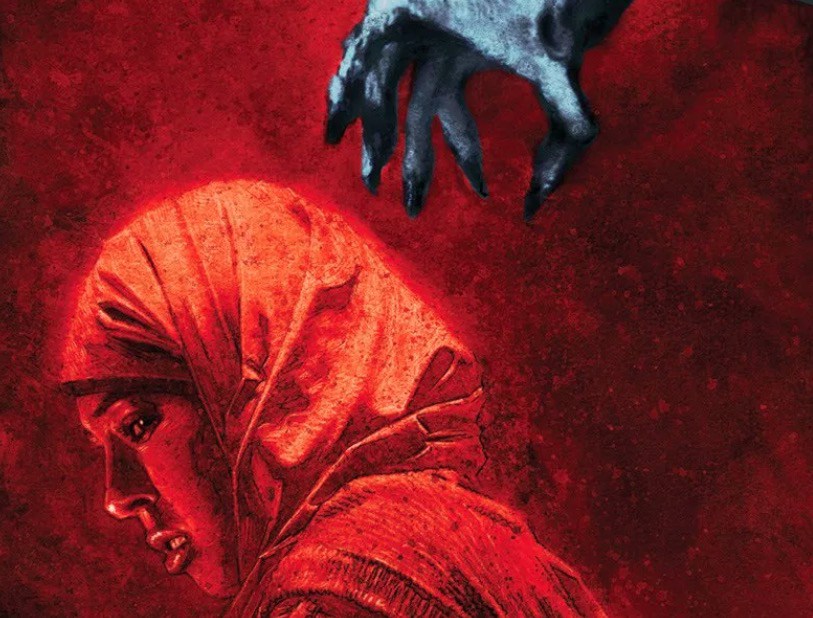
Pichetshote starts off the first issue of the Infidel miniseries with Aisha waking up from a nightmare that feels a little too real. He introduces the character of Aisha, a Muslim-American woman, living in a run-down, perhaps haunted apartment with her husband, stepdaughter, and her mother-in-law.
Pichetshote’s characters embody feelings and emotions like her mother-in-law’s veiled prejudice and her hot-headed but protective husband that make things in the comic work right away. He does a great job of conveying a lot in the comic without saying too much.
At the beginning of the comic itself, Aisha defies preconceptions by demonstrating her nerd culture expertise in the Sarlacc Pit cake. She is shown bonding with her stepdaughter and mother-in-law over a Bundt cake and Star Wars culture. She demonstrates her character, as someone everyone can relate to, as she is also just another person living in a low-rent scenario in America trying to make ends meet.
The Sarlacc Pit Bundt cake really excites Kris, her stepdaughter, and she voluntarily hugs Leslie, Aisha’s mother-in-law. Leslie’s excitement over the hug carryforwards to Aisha as well, who volunteers to teach her about another Star Wars character to help connect with Kris even more. Like any other mother, Leslie decides to teach her Tom’s favorite dish as a way of showing her gratitude. Unfortunately, the baked ham recipe Leslie was talking about had pork in it, which is haram in Aisha’s culture.
While Aisha forgives Leslie immediately and brushes it off as a mistake, her husband Tom storms in and get angry at his mother for forgetting. Her husband might seem a little too loud, but he’s not wholly unlikeable because he stands with Aisha and defends her cultural choices when things go wrong.
Everyone is a sliver of a stereotype, but they also reflect a wide range of characteristics, which makes them more intriguing and they make the plot more interesting. Tom pleads with Aisha not to trust his mother and calls her a manipulative person.
Later, she recounts this incident to her friend, who agrees with Tom. In the story, Aisha gives the impression of a very forgiving person who wants to avoid conflict and ensure a harmonious home environment. She just dismisses Leslie’s racism and xenophobia by claiming that her behavior is a thing of the past, and she must have changed since then.
This casual dismissal of highly problematic behavior starts to make more sense when Aisha talks about her own mother. Her mother has cut off, all contact with her and believes that Aisha is not Muslim enough anymore. No matter how much she prays and practices her religion just because she is engaged to a non-Muslim. Aisha is probably trying to fill in, her mother’s absence by seeking a motherly figure in Leslie.
As the story progresses, we find out about the possibly haunted building. There were murders and bombings in the building because, as it is subtly shown, it housed Muslims. The possible haunting is quite evident in the visions she is having, not just while she is dreaming but even as she explores the building.
Tom warns her about his mother once again, but she just brushes it off and asks him to trust her instead. The next panel subtly makes us believe Tom when he says his mother is manipulative and hasn’t changed her ways. Pichetshote and Campbell show Leslie clutching her bag just because she is seated next to a black man.
Knowing his wife and how stubborn she is, Tom asks Aisha’s friend, Medina, to keep an eye out for her. While Medina trusts Aisha and her judgment, Tom simply reiterates his concerns. According to him, not many of the racist and xenophobic tenants of the building have moved out.
While this is happening, Aisha sees another vision of a racist man calling her names. She thinks that she is dreaming again while Campbell builds up the terror with his artwork. When Campbell is in charge of the art, he magnifies those personal moments even more. His meticulous attention to detail, as well as his rough, hatching approach, to blending reality and terror are commendable.
The tone for the entire series is set by a basic discovery about another character’s motive, which is tinged with fear or distrust. For example, Campbell’s chalky, towering shadows are capable of making each image frightening and portraying the ever-present threat. His ability to develop layouts is also visible. He’s not afraid to slow things down and focus on the finer points, demonstrating how movements reveal inner thoughts beat by beat.
She picks up a knife and mistakenly tears Leslie’s nightgown. We see the knife dropping clear of any blood in one panel, but it turns up red in the next. The suspense and the build-up shown in one single issue are immense. Pichetshote ends the first issue on a cliff-hanger with Leslie in possession of the knife.
Navigating a New Normal
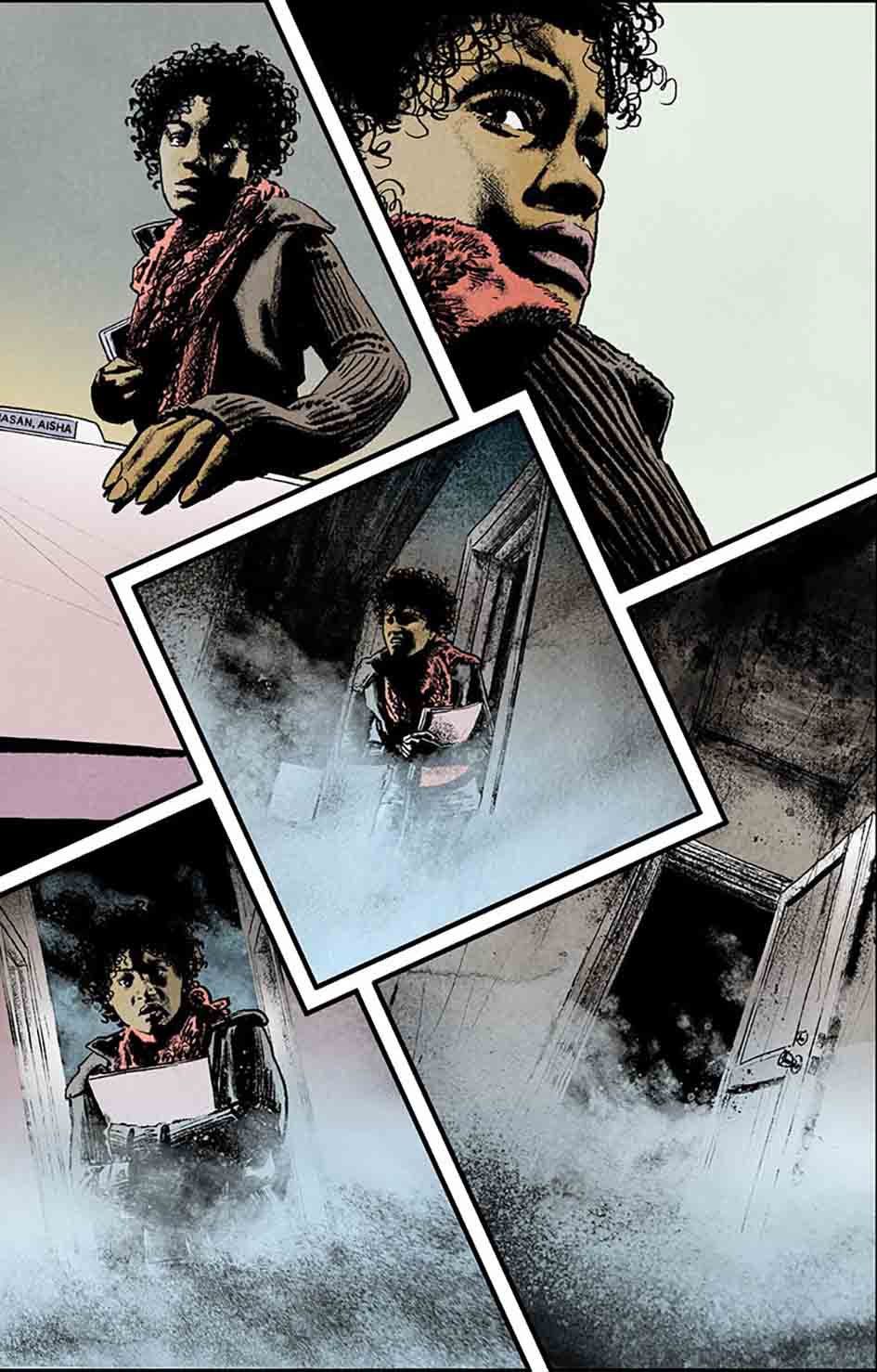
If you aren’t binging the series as I did, Pichetshote briefly summarizes the last issue with the character sketches in the beginning for reader convenience. But since you are getting to know the story here, anyway, let us just get on with it.
Aisha tells her doctor that she has been having visions and hallucinations recently, which her doctor just accounts as side effects of her recent medication. He decides to change her medicines to a milder but safer one with no side effects. With that, she goes out to find a new normal in her life’s routine, dealing with racist people everywhere. She goes down to Medina’s house to hang out with her and her new friends.
While they are there, Ethan, one of Medina’s friends, starts talking about his research on occult symbols for his new book. She asks him about a symbol that she had seen in one of the ghastly hallucinations that she has, but he doesn’t seem to know about it.
Honestly, it looked like a toned-down version of a Nazi symbol to me. Just then, she saw another hallucination that seemed to have imprinted itself into her mind. She left Medina’s apartment, convinced that her distress just stemmed from a lack of sleep.
Pichetshote shows a conversation between Leslie and Kris while Aisha eavesdropped, near the door -that makes one think. Leslie apologizes to Kris for yelling at her about the hijab, but even though she seems to be accepting of Aisha’s choices and religion, her xenophobia seeps through.
She seems to worry that Kris might convert or get influenced, but Kris, despite being so young, manages the situation really well. It makes you realize that racist and xenophobic feelings are something that one cultivates inside us. They are not something that one is born with.
Infidel continues the subtle social horror of the first issue with an endless nightmare of horrific ghouls and specters crawling out of every page, preying on Aisha’s and everyone else’s worries. Aisha’s anxieties are that Leslie will turn on her again as they grow with each freak-out and strange reaction, even as Leslie appears to have accepted Aisha. That isn’t to suggest that the nuances and attention to racial tension aren’t present. The exact opposite is true: physical atrocities are utilized to bolster social ones.
The vision Aisha saw at Medina’s house hasn’t left her mind even after dinner. She is distracted as she talks to Leslie as well. Just then, Leslie drops a packet of meat that is swarming with ants. Aisha is entirely shocked at seeing this because she had bought it, just that morning. It was fresh meat.
To deal with this distress, she sits down to pray. After praying, she starts researching the visions and the symbols that she has been seeing. In the process, she finds out about Mitchell Fisher, a man who had died in her building. While looking at his pictures, she realizes that he had the same tattoo that she had seen in one of her visions.
Things start to speed up when Kris enters Aisha’s room looking for ‘Captain Pashma.’ Aisha’s terrifying visions continue to show up even in front of others. The racist and xenophobic entities start multiplying and ganging up on her. They seem to be able to hold on to her as well, leaving her vulnerable and out of control.
Leslie and Kris come into her room when they hear her screams. Kris tries to help Aisha, but she is knocked down by Aisha’s hand, which is being controlled by one of the ghost hallucinations. Leslie grabs Kris and runs out of the house. While Leslie catches her breath near the stairwell. Aisha manages to get away from the ghosts and then goes to them.
I love how transparent Aisha is with her emotions. She immediately tells Kris and Leslie that it wasn’t her who attacked Kris and that she needs help. With that, Leslie and Aisha embrace each other, and Leslie asks her what is going on.
Before she can tell her anything, the ghosts return. They grab Aisha by her hijab and pull her back while pushing Leslie and Kris down the stairwell. There is a pool of blood near Leslie’s head, and Kris seems to be unconscious while Aisha is on the ground calling for help, and her hijab lies abandoned on the floor. During all this, she is being called a killer by the ghosts.
The thing I like the most about this series is how Pichetshote ends the issue with an insightful editorial behind his motivation to create this series. He talks about the racism and xenophobia he and his family faced. It is refreshing to see the writer communicating with his readers beyond the storyline. It is also wonderful to see how well he mixes natural and supernatural horrors in a politically charged comic.
The Occult is Everywhere
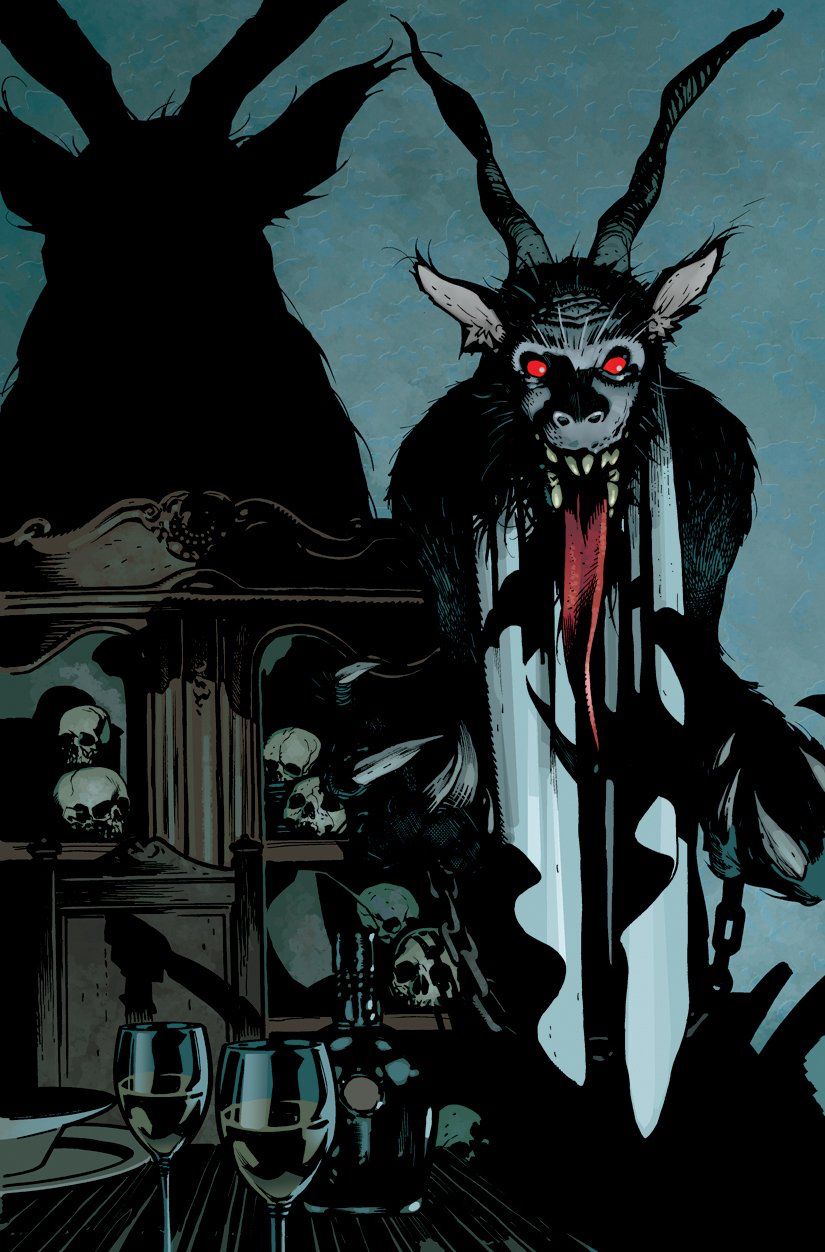
In this issue, Infidel switches its focus away from Aisha and onto Medina and the rest of their companions. Infidel manages to keep the question of Aisha’s recovery still up in the air.
The impact of Aisha’s mother-in-law’s death when she tumbled down the stairs is the focus of this issue. It begins with Aisha in a coma in the hospital, allowing the writer, Pornsak Pichetshote, to focus on the supporting characters and their perspectives on Aisha’s activities and the house as a whole. He starts the issue with a quick recap, just like the other issues. Then, he begins the main story by focusing on Aisha and Medina’s friendship. He builds up how they have had each other’s backs since they were kids, to the current day.
Another resident created rumors about the incident, claiming that Aisha had pushed Leslie down the stairs. While Medina seeks retaliation for the Aisha rumors, the other friends serve as a sounding board for the usual thoughts and talks that arise in the aftermath of such a tragedy. The concept of “I’m not racist, but…” emerges after a lengthy discussion about racism and its definition.
Pichetshote interrogates each character, revealing underlying racism as well as each character’s perspective on the situation. Everyone is clutching at straws to comprehend what is going on, given that someone has died, Aisha is in a coma, and her kid has been knocked out. This helps to depict people’s perplexity and misgivings, further tying the horror story to real-life issues. A fascinating discussion on racism is brought up, and it will make you think. Is it racist if someone says they aren’t attracted to black people?
While slowly revealing the root of the horrors, the comic makes you think about this and other racial concerns. It also mentions how racism is so deeply established in American culture that navigating the concept is difficult, even when a person of color has done something wrong. Given how much of this work is based on real-life worries, one can only assume that the apparitions in the house are created by the residents’ hatred or terror. It’s a tricky idea, but the comic does an excellent job navigating it.
Each character is dealing with things in their own unique way, which allows the reader to obtain profound knowledge of not only the characters but also a way of thinking that has become firmly established in our culture.
The most robust conversation in the series thus far appears in Infidel #3, with Aisha’s neighbors discussing the terrible tragedy. This issue also brings up another character, Arthur Quinn, during the racism discussion between Reynolds and Ethan. We follow Ethan’s quest for content for his new book and his recent obsession with the occult.
Medina, on a quest for retribution on behalf of her friend, is still engaging with the woman who had spread the rumors when the argument becomes heated, and a ghost shows up for her as well. The spirit calls her a slut as she cowers on the ground. Pichetshote brings us back to the start of the comic by addressing their deep friendship again. Just when Medina is in trouble, Aisha wakes up from her coma screaming.
Ghostbusters in the Apartment Building from Hell
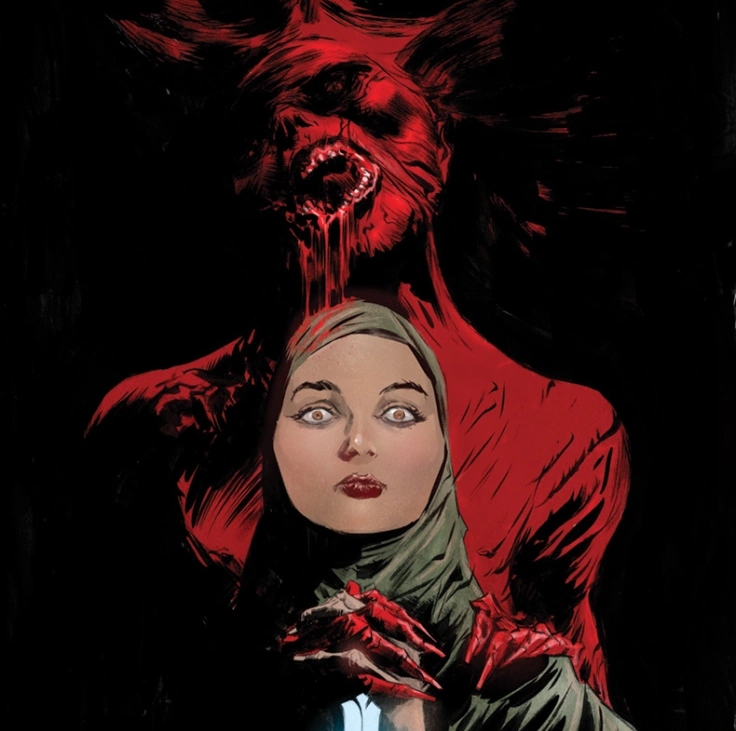
Aisha is such a fascinating and kind-hearted character, so this issue has me genuinely concerned about her well-being. I’d like to see her live. Thankfully, Medina is more than capable of taking over as the main character. Because she’s more assertive and direct than Aisha, the novel reads a little differently—as it should.
While Medina grapples with reality and talks to her comatose friend, letting her know that she believes what she was going through. She is also scared of going back into the building, but she is willing to go the distance for her friend and get the medical records she needed. Separately, Ethan has invited an old blogger who has spent years exploring the mysterious Arthur Quinn to the celebration.
Mr. Quinn’s efforts lead them to uncover more of the mystery surrounding what is allowing spirits to enter Aisha’s apartment building. Still, it doesn’t make matters more accessible, as this issue ends with a confusing conclusion. Quinn had worked on the purity of emotions like love, hate, fear, hope, etc., and the effect of those energies affects us sometimes in the form of poltergeists or inexplicable illnesses.
While the entire thing just sounded like the plot of ghostbusters, after talking to Quinn, Ethan and Medina believed what they saw and decided to return to the flat together. They firmly believed that if they are together, nothing could harm them.
They return to the flat, now the scene is similar to many other suspenseful horror film climaxes. You know what Medina and Ethan are in for, and you know it’s going to be terrible, vicious, and evil! You know things aren’t going to go as smoothly as the characters hope, so you’re simply waiting for the axe to fall, while the two characters make their way into the darkness. This book’s tension and flow are excellently built up, and it makes for a thoroughly enjoyable horror read.
While they are in the flat, we see Aisha’s unfailing optimism and her ability to see the good in everyone when Medina takes a look at the research Aisha did on Mitchell Fisher. Just then, the apartment starts getting filled with steam. Medina realizes they never got Aisha’s medical file and asks Ethan to go back into Aisha’s room with her. He tells her to go ahead, and he is right behind her. Until he isn’t-The ghostly entity gets to him before he can escape.
Medina grabs the file and comes back, looking for Ethan. She finds him in the stairwell, except she doesn’t find just him. Sendhil, Tom’s friend, is also there on the ground, as cold as Ethan’s dead body. While she checks on him, something bursts from his body and covers Medina in blood.
Of course, Tom chooses just that moment to enter. “You killed them all….” I don’t think Pichetshote could have ended this issue at a better cliff-hanger. This is yet another visually terrifying issue from Aaron Campbell.
The meticulous attention to detail, along with the world’s general decay, creates a familiar yet unsettling atmosphere. The monsters are horrifyingly designed, and Campbell does a great job with their morphing features in the sequential style. Jose Villarrubia’s color work is dark and menacing throughout, adding to the comic’s terrible mood.
Infidel #4 is another standout issue, continuing to deliver the unsettling and frightening terror that this serial has become known for. Pornsak Pichetshote, Aaron Campbell, and Jose Villarrubia have created something that is both timely and impossible to put down once you start reading it.
Collective Responsibility
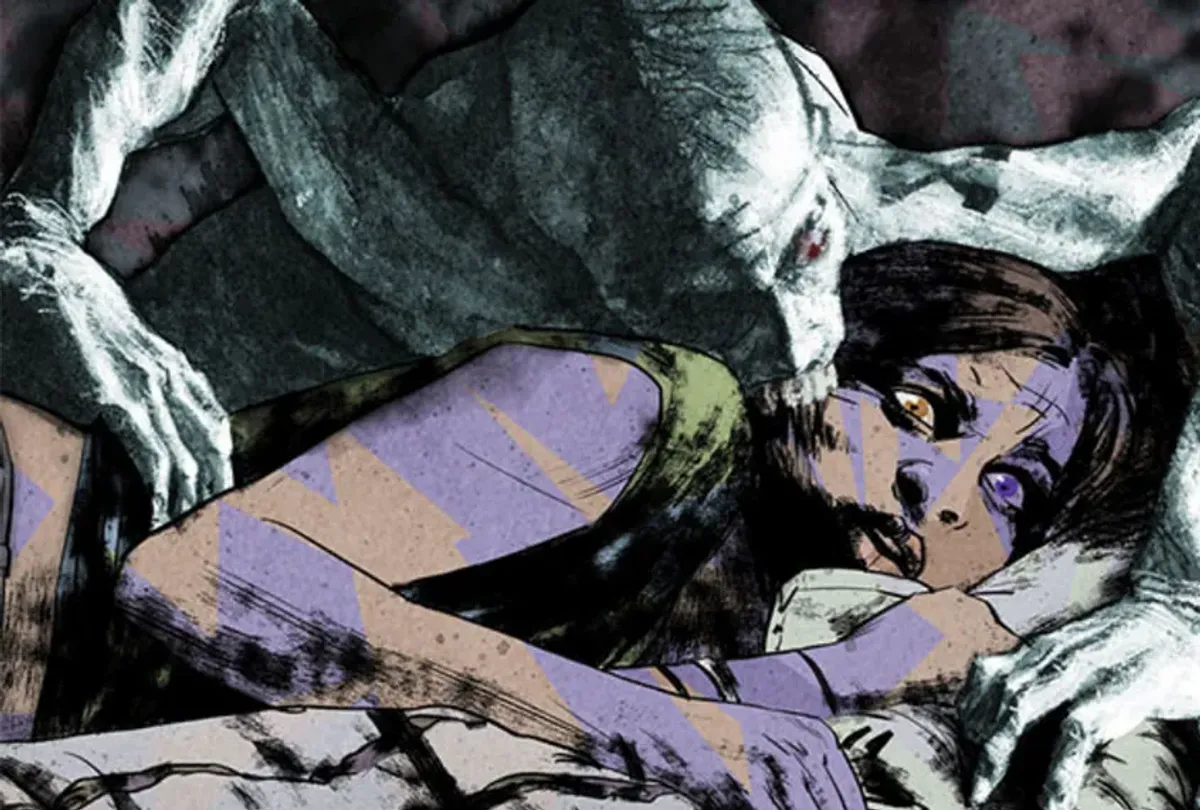
The saga comes to a bittersweet conclusion in Infidel #5. The comic isn’t finished murdering off its primary characters, and it’s ready to be brutally honest about what drives us and what we do to one another.
Infidel #5 begins with a startling, unusual scenario like many good horror stories. It throws the readers off until they discover what Pichetshote is driving at, and it’s a taste of what’s to come in the comic. Throughout the story, the narrative sprinkles tidbits of knowledge that are akin to moral problems; a character must do something.
The reader is constantly prodded, asking, “Are you okay with this?” Why?” It leaves a harsh taste on the tongue from time to time, but when it does, it lingers. You’re left thinking about that animosity for pages after the incident, and you’re more tuned in to another person’s perspective like clockwork.
The horror tactics are responsible for this sensitivity. The pictures of Campbell and Villarrubia terrify the character, and by extension, the reader. This shared terror puts readers in the shoes of Infidel’s primary characters, even if they don’t look like them, and it’s a valuable learning experience.
This issue begins with a flashback that reveals the prejudice of the apartment building’s neighbors. This flashback does a wonderful job of fleshing out the first “terrorist attack” from issue #1. Pichetshote delves into the characters’ ignorance, revealing how their worries, doubts, and misunderstandings all contribute to the mounting rage and frustrations.
This series has done an excellent job of blending real-world terror with positively terrifying visuals, ensuring that readers understand that while horrors may be supernatural, they also exist within each of us.
The struggle between Medina and Tom dominates the rest of the issue, following up where the cliff-hanger left us. Tom is convinced that Medina is responsible for all of the murders and attacks, which have resulted in a horrifying conflict intensified by the demons. The creepy subtlety of the early issues is partially compromised here in favor of a horrific sprint finish as Medina urgently tries to get out of the apartment building alive.
The fact that Aisha isn’t expected to survive the night adds to the urgency of the situation, which isn’t helped by Aisha’s already devastated fiancé Tom getting the wrong end of the stick and blaming Medina for their friends’ deaths. You’ll pull for the good folks to win as the plot twists and turns, with bruises and beatings.
This issue’s pace is also excellent. This issue of the comic miniseries begins with a long build-up of rage and anger that culminates in a massive explosion. It then slows things down once again with violence and another intense scene. It begins with a sense of peace before building to another terrifying moment. It’s a thrilling ride, and it’s one of a kind in terms of how it accomplishes this.
The genuineness of the characters in this story only adds to the terrifying quality of the story’s ghostly villains. It showcases a social system built on domination, oppression, and submission of people. These are manifestations of ocular degeneration, the visual expression of spiritual decline splattered over the pages and infecting the vision of everyone who dares to look at these panels. They’re the stuff of nightmares, and they terrified me to death.
This issue’s finale ignites the concoction that has been simmering for the last four issues. The film’s ultimate climax is a physical explosion that shakes the foundations of both the environment and the performers.
The characters that are still living have the impression that they will live on after this series, but they will be forever changed. In the last pages, Medina and Aisha, as well as the other characters, discuss the book’s most basic theme: hatred. The hatred we have in our hearts and the hatred we strive to get rid of.
The trilogy ends on a high note, merging modern hate and love in a way that appeals to a wide range of people. It’s a coping mechanism for some and insight into the consequences of our ideas and actions for others. The final page of Issue #5 is both hopeful and terrifying. It is aware of the current situation.
Why should you read Infidel?
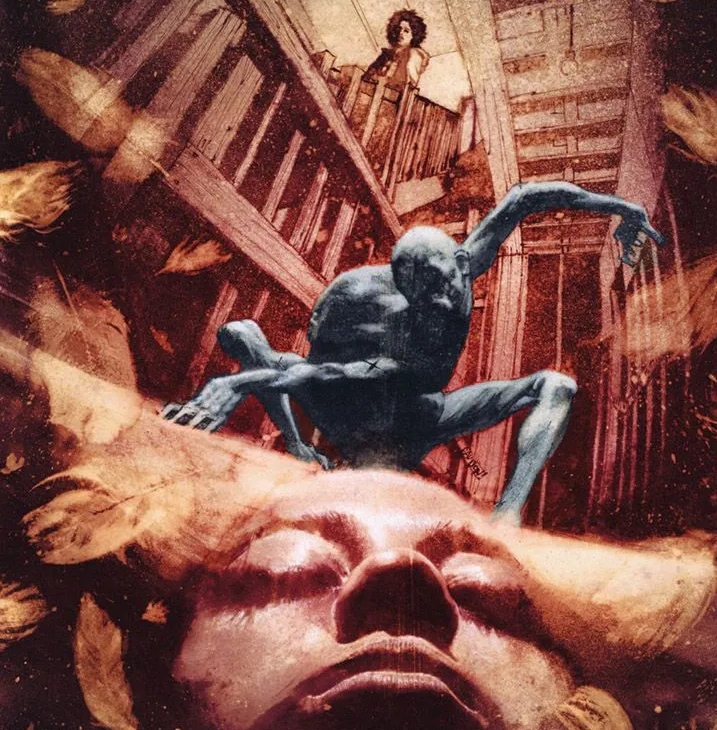
I don’t think I have come across a miniseries as well done as Infidel. The comic series not only uses characters that we see and interact with in real life, and it also has the credit of being politically charged, in the right amount, making it relatable. It is a beautiful page-turner that immerses you deep into the plot.
The way Pichetshote and Campbell have curated the entire comic combining diversity, spice of life, horror, suspense, and the reality of being a working-class person living in America is immaculate. Campbell’s art speaks volumes throughout the series. The colors and expressions on the faces of the characters fill you with the same kind of panic that they are experiencing.
Infidel, Pornsak Pichetshote, and Aaron Campbell’s horror series are about a deadly presence that appears to feed on hatred, the death toll is high and racist slur abounds. However, in a room full of shadows, writer Pichetshote is infatuated with the light to paraphrase one of Infidel’s characters.
While a natural shade of racism hangs over much of the novel, claiming the lives of many of Infidel’s multicultural cast members, Pichetshote writes with a deep empathy that will drive readers to rethink their fundamental beliefs about his character time and time again. Although the topic of Infidel is often frightening, Pichetshote crafts an intensely humanist horror story with a happy ending.
The creators have wonderfully captured the sense of claustrophobia that comes with living in an urban setup. Because Aisha and Tom’s apartment is so small, they had to fight on the street, which his mother does anyhow. The other occupants of the building are inevitably sucked into Aisha’s problem. The congested conditions exacerbate racial tensions and make even the smallest decisions tense.
Is there a racist motive behind the old man’s refusal to speak to Aisha? Is it just plain aloofness? Or is it a mix of the two? As soon as things get eerie, a seemingly nice Korean woman turns on Aisha, claiming, “I’m not automatically giving those individuals the benefit of the doubt simply because I might sound closeminded.” Then there’s the blonde next-door neighbor who tells the cops a lie about Aisha. “When those bombs went off, I was living here,” she replies defiantly. “Nobody has a better reason to be paranoid than me.”
Campbell’s visuals are just as crucial as Pichetshote’s words in conveying the concept of Infidel. At first glance, Campbell’s strategy appears to be flawed: the human characters, while realistically depicted, are far less emotive and vibrant than the spirits who threaten them.
Though the humans can pull off some convincing frightened looks, their features are usually closed, and their body is stiff. On the other hand, ghosts materialize in a variety of imaginative and unpleasant ways. They’re both repulsive and strangely graceful. The spirit world is far more vibrant than the mortal one.
Infidel is a must-read as it is not only a great horror comic, but it is also insightful and educational. It plays on real-life fears and portrays them by manifesting those fears as spirits and revengeful ghosts.
